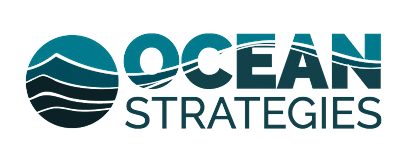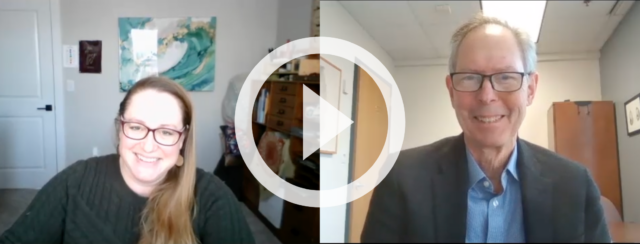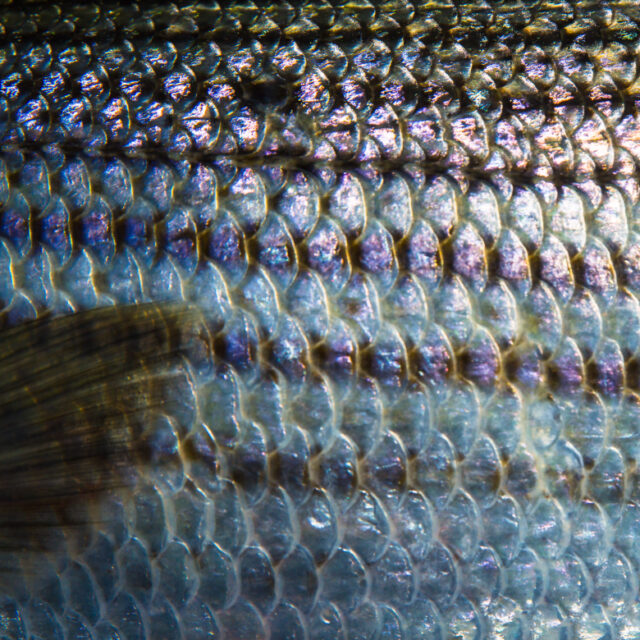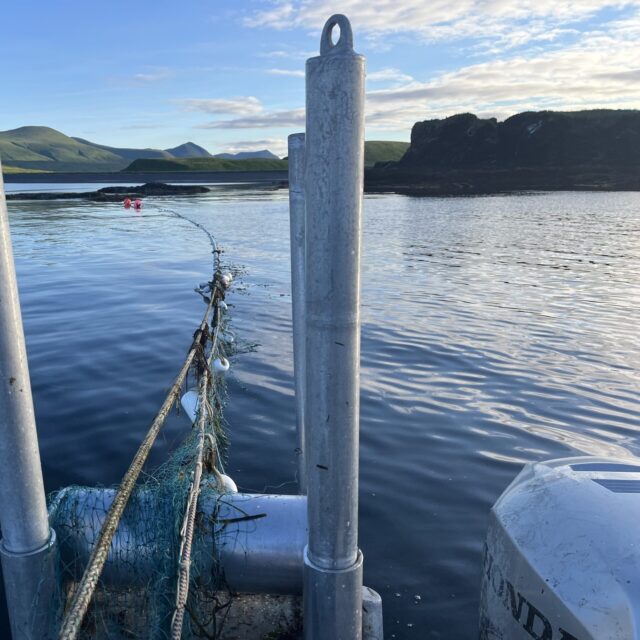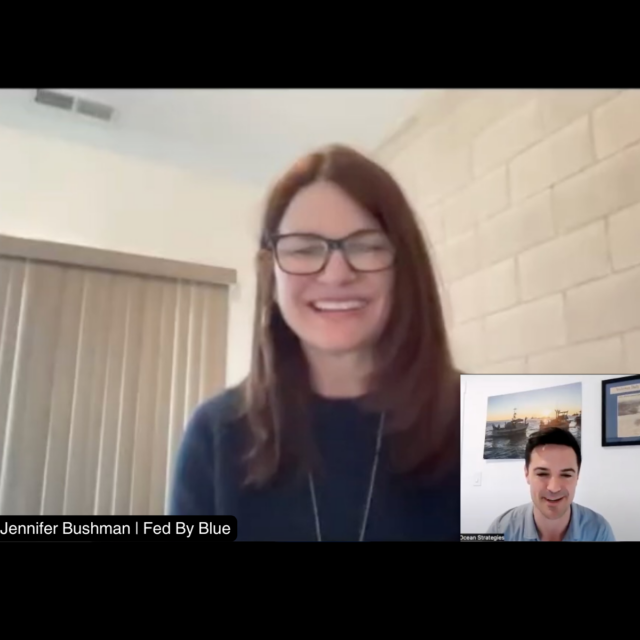Q & A with Dr. Michael Rubino
Ocean Strategies Senior Consultant Hannah Heimbuch recently chatted with Dr. Michael Rubino, NOAA Fisheries’ Senior Advisor for Seafood Strategy and one of four senior scientists in the management team. They discussed an overview of NOAA’s developing National Seafood Strategy. NOAA Fisheries is tasked with management and conservation of the Nation’s seafood resources, for sustainability, food security and local-to-national benefit. The seafood strategy provides an overview of how NOAA Fisheries will address that task in the coming years, recognizing that challenges like climate change, competing ocean uses, and changing waterfronts require new approaches to existing goals. Hannah spoke with Dr. Rubino about how they’ll complete and implement this overarching set of priorities.
Watch the full interview with Dr. Michael Rubino and Hannah Heimbuch on YouTube.
Hannah: First question is always light — if you’re cooking seafood at home, or ordering at a restaurant, what’s your go-to favorite and why?
Dr. Rubino: One—especially when I’m on the west coast—that I love is sablefish, or black cod. Prepared baked or poached in sort of a miso or pan-asian spice flavoring, or the soup is really terrific. And one of the side benefits of my job is that I travel—I visit docks and farms and processors around the country—and one of the benefits is being able to sample oysters on the half shell. It’s really a way to taste very viscerally the local environment. Salt, sweet, metallic, melon, buttery—you get a real sense for the local environment that way. I started out early in my seafood career farming shrimp and crayfish in South Carolina, and I think if I was to start over today, I’d probably be growing oysters.
Hannah: Now for the Seafood Strategy. A lot of the language in the strategy recognizes challenges that the U.S. seafood sector, and food systems generally are facing. Let’s talk about some of the reasons that the agency is taking this on — why this and why now?
Dr. Rubino: We know—but I think there’s also an increasing awareness in policy circles—that seafood is critical when it comes to public health and nutrition, creating jobs, and building a climate resilient food strategy. I don’t know a catchier way of saying that. The U.S. fishing industry and federal/state agencies have really worked hard during my time in the industry to end overfishing, put all our wild stocks into rebuilding plans, and U.S. fisheries management is the gold standard – this is a success story. But the benefits of this vital industry are threatened by a variety of unprecedented challenges.
I think the pandemic was really a wake up call for all of us. Markets were disrupted, restaurants shut down, revenue for U.S. seafood producers in 2020 were down anywhere from 10-80%, depending upon gear type and species…and yes the industry has recovered since but the recovery has been uneven. Markets, trade and supply chain disruptions continue, in part because of the fall out of covid. In part because of inflation, the war in Ukraine. On top of that we’ve got ocean use issues—offshore energy, wind energy—we’ve got labor shortages, aging boats and processing, graying of the fleet, conversion of working waterfronts; all those things affect the long term health of the industry. And perhaps the most important risk is climate change. Rapidly altering food webs, species abundance, habitats. I mean, the current shutdown of Alaskan crab is the proverbial canary in the coal mine. So during the past couple years, across the seafood spectrum, fishermen, seafood farmers, tribes, processors, retailers, they’ve come to me and my colleagues at NOAA Fisheries asking what we can do as an agency to work with them to increase the resilience and profitability and competitiveness of our seafood industry. And what can we do better to prepare for more shocks.
So that’s the genesis of the seafood strategy. It’s really a product of these conversations and of the series of small industry round tables that our Assistant AdministratorJanet Coit convened last year.
Hannah: Given all that, would it be fair to say that some of this is sort of redefining sustainability a little bit, bringing out — how are we going to have to adapt and plan together to be sustainable in the new normal we’re experiencing in some places. Do you see this shifting mindsets a little bit, or does it reinforce what NOAA has always done?
Dr. Rubino: I think we need to continue to reinforce the sustainability messages and the wise management that we have both for wild capture and for aquaculture. We’ve heard loud and clear from fishermen and processors that the core fisheries work of the agency—stock assessments, management through the regional management councils—that continues to be fundamental to the agency’s mission. But we also heard that this collaborative management of wild capture is not enough to sustain the industry in the face of these challenges. We also heard a desire to increase sustainable production of both wild and farmed. A desire to put more U.S. seafood back on U.S. plates. We heard that the variety of services provided by the agency are important—grants, fishery finance programs, seafood inspection service, telling the story about sustainability through FishWatch, economic and market social analysis, Sea Grant’s young fishermen’s training program. In other words, managing fish as a resource is fundamental, but opportunities to expand and highlight work on fish as food, and increase domestic production and jobs and market opportunities, are also important.
Hannah: From an implementation standpoint, where are we headed? NOAA has been collecting comments, conducting listening sessions.What comes after that? How does this enter into management or NOAA operations?
Dr. Rubino: Sure, but first a bit of context. This strategy builds on the broader NOAA 2030 vision, and is one of a handful of complementary strategies that are sort of nested under NOAA Fisheries’ priorities—climate-ready fisheries, an aquaculture strategy, the work from our international affairs office on IUU fishing, port state measures, an equity and environmental justice strategy, and the work we do for protected resources and habitat. And one of the reasons we’re seeking public comment is that the objectives in this strategy are ambitious. Let’s face it, we have limited staff, budget, time, our resources are already stretched, so we’re asking for advice on priorities, particularly about the seafood part of our mission. What should we focus resources on during the next five years or so? Some things we’re already doing, but there may be a few additional cost effective things we can do with additional resources that will pay big dividends. Some of those particular actions really are aspirational. So this strategy implementation will help us to identify emerging priorities, and really make the case for future budget requests. So yes, all of the feedback from the public comment will be used to prepare a final draft of the strategy and develop an implementation plan.
Hannah: You brought up funding. When it comes to implementation and having the funding to make those a reality, what is that process like. Will this have to fit into NOAA’s existing budget or will there be an effort to raise additional funds?
Dr. Rubino: Well, officially, everything we do is within existing resources based on what Congress appropriates. There are some things we can do now, the fundamental work. But we may need additional resources for that, especially in the face of additional challenges and competing ocean uses. But as we work through our internal budget processes, as we work with stakeholders, and you work as stakeholders with Congress, [the question is] what are the priorities for future potential budgets? The agency’s budget has been essentially flat for 10 years or more, so [with inflation] the real dollars go down.
Starting off, we know seafood is important for public health and nutrition and jobs, and so on, but does everybody else? And how do we make that case? We need to work together on that. Part of the aspirational part of this strategy is how to get there.
Some of this is also, how do we leverage other people’s money and capabilities, especially on strengthening the entire seafood sector, goal 4 of the strategy. Working across federal agencies to modernize, to recapitalize, part of that is USDA and Economic Development Administration.They have deep pockets that NOAA doesn’t have. But we can provide advice that doesn’t take up a lot of staff time. For example, USDA’s buying programs, for school lunches and nutrition programs. Another example from my previous work in the agency on aquaculture is that we provided a small amount of funding to Julie Decker at the Alaska Fisheries Development Foundation to work with folks in Alaska and elsewhere on a mariculture strategy and initiative. Well that’s leveraged probably $80 million dollars from other agencies—Economic Development Administration, USDA, private foundations, Sea Grant, and others—to develop seaweed farming in Alaska. So those weren’t capabilities that we had as an agency. But we were able to use a little bit of our funding and our knowledge base to leverage much greater amounts of finding. So that’s at play here too.
Hannah: As we talk about how to make those bigger funding connections and how to get input from all of the people this is really affecting, I’m thinking now about some of the retailers and distributors that move seafood across the country and sale outlets. I hear that you’re hearing from harvesters and processors and people on the waterfront, but are you hearing from the retailers that are really most Americans’ access to seafood?
Dr. Rubino: Some of us do. I do, it’s part of my job, visiting with folks from the entire spectrum. Our Communications office also works with FMI (the Food Industry Association) and supermarkets. We have relationships with chefs who are very in tune with the seafood sector, folks like Barton Seaver, and so that’s a way to connect with the broader retail community. I think early in the pandemic there was a lot of innovation that went on as restaurants shut down. Direct marketing, farmer’s markets…we heard a lot during covid about folks wanting to know where their food comes from. And to buy local. So those are all positive things that come out of the retail end.
Hannah: As we talk about this, I’m thinking about how all of NOAA’s different strategies work together to serve a really diverse stakeholder base. People that are small local producers, and then people that feed a much larger populace. I’m wondering if balancing those different needs is top of mind when you’re thinking about the seafood strategy and how does it integrate with the Equity and Environmental Justice strategy as well?
Dr. Rubino: That’s a very broad question. Wild capture, aquaculture, international trade, seafood inspection—those are all things amongst NOAA Fisheries’ diverse seafood menus. All federal agencies have a variety of diverse mandates, so there are always trade offs in managing natural resources. Just think about wild capture fisheries. You know you’re managing for maximum sustainable biological yield, you’re maximizing economic yield. Who is allotted quota and catch shares? Who gets to use ocean space? What about jobs in fishing communities, how do we sustain those? So I think the aim of the seafood strategy is to foster opportunity for all participants in the U.S. seafood sector, and to expand markets for seafood. Maybe if I can use a cliche: a rising tide lifts all boats. And as I noted earlier, we as an agency can’t do it all. So yes, these various strategies are complementary, but we have limited staff, budget and time, so we’re asking advice and clarity on how to use our resources wisely.
On EEJ in particular, I would say there’s overlap in terms of subsistence fishing, tribal fishing, in the face of pressures to consolidate. How do we maintain diversity and opportunity for small to medium scale enterprises in the seafood industry? How do we create opportunities for new entrants and young fishermen, which is a real concern at the moment. We have serious labor issues, particularly in processing. So these are authority questions that we as an agency are aware of, but we don’t necessarily have the capabilities to delve into all of it. But we’d like to work with the seafood industry and with a range of other industries, states, tribes and so on. And we will continue to consult with the Councils, the Commissions, fishing associations, seafood farmers and others on implementing this.
Hannah: Do you see this coming back to the Councils for input as you get more to the regional phase to bringing these plans into play?
Dr. Rubino: We’ve already had requests from most of the Councils to provide briefings. We will do that over the next several months. Most of that won’t be before the comment deadline, but will be a yearlong process in terms of putting together an implementation plan. So I would say that a revised strategy will be out later in the year, and towards the end of the calendar year we’ll have a vetted implementation plan.
Hannah: What else? What haven’t we talked about that we should?
Dr. Rubino: One thing I thought of you know is that crises like covid, or like climate change, crises are also opportunities. We need to remember that despite all these threats and systemic problems we’ve been talking about, large parts of U.S. wild capture fishing sector are thriving. We have a small but vibrant and growing U.S. aquaculture sector – that’s oysters, clams, muscles, seaweed. As I mentioned earlier, when restaurants are shut down, sometimes a crisis means innovation. So we found all kinds of new ways of getting seafood to market, supermarket sales of seafood in 2020 were actually up during covid, and I think people thought about where their food comes from during that crisis. And we have a good story to tell as a U.S. seafood industry. So that’s something to build on as we go forward.
